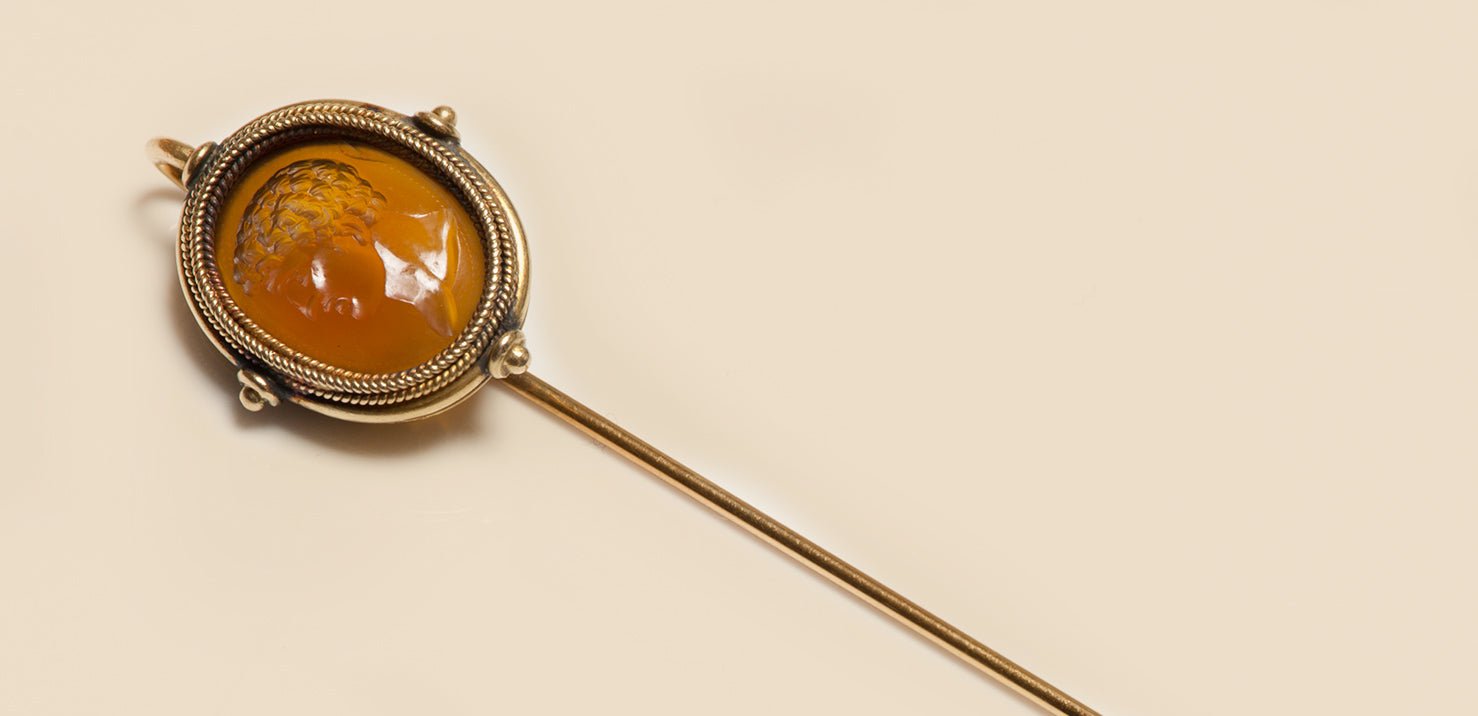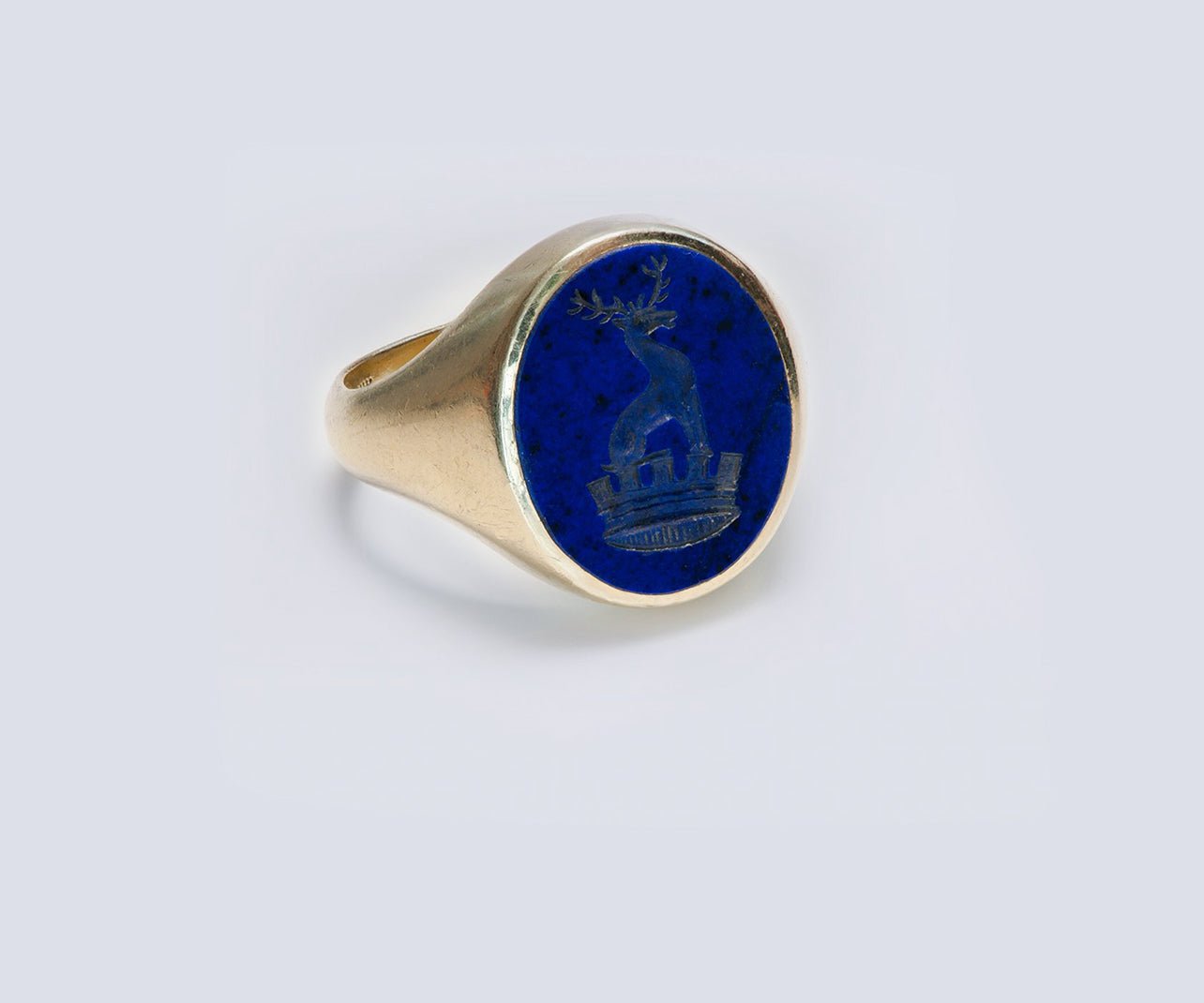
The Legendary Castellani Jewelry - A History of Perfection
Whoever has the opportunity to own even a tiny authentic Castellani jewelry piece is most fortunate. Not only is it extremely rare and perfectly crafted, but the history of its creator is glorious like no other.
The story of the legendary House of Castellani begins in 1814 when Fortunato Pio Castellani opened a jeweler's shop on the ground floor of the Palazzo Raggi in the Via del Corso in Rome, Italy.
Not long after, encouraged by a few admirers of ancient art, Castellani began in the 1820s to realize the potential market for reproductions of antique jewelry.
Castellani Started to Make Archaeological-Style Jewelry
The career of Fortunato Pio Castellani flourished after the jeweler met Michelangelo Caetani, in 1826, at a conference in which he talked about how to recreate the look of ancient gold. He inspired Castellani to imitate and seek inspiration from the ancient jewels found in the excavations.
Michelangelo Caetani, who became Castellani's close friend and collaborator, had extensive knowledge about the techniques of jewelry production and was connected with the Roman high nobility. He was an exceptional artist, full of creativity, as well as a Dante scholar, historian, and talented carpenter.
According to Maglia del Giolelli, in the early 1830s, Castellani began making archaeological-style jewelry. In 1836, when the Etruscan Regolini-Galassi tombs were discovered, the Pope's authorities invited him to study the jewelry that was brought to light.
Fortunato Pio Castellani had eight sons and he chose two of them, Alessandro and Augusto, to follow him in the business of jeweler and goldsmith.
Castellani Revived Ancient Techniques
In 1840 and 1950, the three of them were granted access to the vast collection of antiquities acquired by the director of the Papal Savings Bank, Marquis Pietro Campana. They were able to recreate the look of granulation and other old processing techniques by drawing inspiration from these ancient pieces. Such techniques had been lost for centuries until they reinvented and perfected them.
The Castellani House began introducing other styles into their jewelry pieces, medieval, Greek, as well as Egyptian scarabs, and micro-mosaics. The company was the first to introduce Christian-Byzantine, Egyptian and classical Greek subjects into neo-archaeological style frames in micro-mosaics.
In 1840 Castellani founded a school for goldsmiths with the aim of enhancing and applying ancient techniques, including glyptics and minute mosaics, thus carrying out a work of safeguarding traditional popular goldsmiths by collecting and preserving precious ornaments from rural areas.
Eventually, in 1852, Fortunato Pio retired from business, leaving his great heritage in the hands of his two sons Alessandro and Augusto.
The Castellani House Continues to Flourish
Alessandro's commitment to liberal politics and the resulting imprisonment and exile he suffered in its cause, interrupted his career. Augusto ended up in charge of the management of the company, while Alessandro adopted the role of collector, antique dealer, biographer, and foreign representative of the House.
In 1860, Alessandro opened a branch of the Roman company in Paris, significantly increasing his business and international fame. The Castellani jewelry become the most coveted by most collectors of archaeological-style artifacts of the time.
In the same year, he also opened a shop on the Champs Elysées and gave numerous lectures on antique jewelry that attracted Parisian high society. Alessandro even obtained an audition with Napoleon III, to whom he presented a collection of Castellani jewelry.
Also in 1860 he presented a collection of jewelry from the Académie des Inscriptions et Belles Lettres and did the same in London, the following year, where he opened a second branch with an attached production workshop directed by Carlo Giuliano.
In 1862 he achieved international success at the Universal Exhibition in London by presenting the "Mundus muliebris" collection and the conference entitled "Antigua Jewelry and dits revival". In the same year, he left Paris and moved to Naples, where he opened a workshop directed until 1870 by Pasquale Novissimo as an antique dealer and jeweler.
Alessandro also organized the first international exhibitions and fairs of the firm: Florence (1861) and London (1862).
At the 1867 international exhibition in Paris, almost all jewelers displayed archaeological-style jewelry in their display cases. The success of the company reached its peak in 1870.
In 1880, Augusto's son, Alfredo, took over the shop in Rome. He dedicates himself above all to the trade of jewels and archaeological finds, frequenting the beautiful Parisian world, establishing relationships with passionate collectors of antiquities (to whom he will sell a part of the Campana collection), becoming a consultant and supplier of museums.
The Evolution of Augusto Castellani
In 1853, Augusto took over the direction of the Roman workshop. The restoration of the Campana collection serves him to deepen the ancient techniques, but also provides him with material suitable for the contamination and assembly of original parts with which he supplies, in collaboration with his brother Alessandro, the musical collections and private European collections.
From 1861 he participated successfully in the Florence Exposition and the following year with Alessandro in the London one. This was followed by the success they had in Paris in 1867 and Vienna in 1873. This is the moment of maximum splendor of the House of Castellani, its pieces being now among the most requested in the international market, and of commitment in supporting the Italian school of archaeological jewelry.
In 1868, in collaboration with Michelangelo Caetani, Augusto created for Margherita di Savoia, who had become hereditary princess, the gold set consisting of a diadem of oak leaves and acorns, rake earrings with winning love, a brooch with a winged Victory and a globule necklace. This commission earned Augustus the title of supplier of the Royal House and followed that made in 1862 on the occasion of the wedding of Maria Pia of Savoy.
Augustus in 1912 received the Knight's Cross of the Labor of Italy for the merits achieved in the field of artistic jewelry.
The Castellani House Closes Its Doors
Alfredo practiced the family art with equal skill and skill, but unlike his father and uncle he does not write or lecture; hence perhaps a certain underestimation of his abilities, which however are remarkable since it is thanks to his passion for the goldsmith's art and his attachment to the work of his father, uncle, and grandfather that today we can admire the collection of jewels ancient and modern ones at the Museum of Villa Giulia and consult the papers in the archive.
In 1930, the House of Castellani closed its doors when Alfredo, the last of the Castellani line of jewelers, passed away.

















